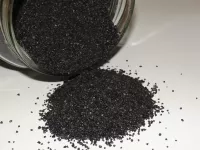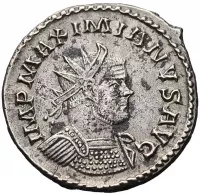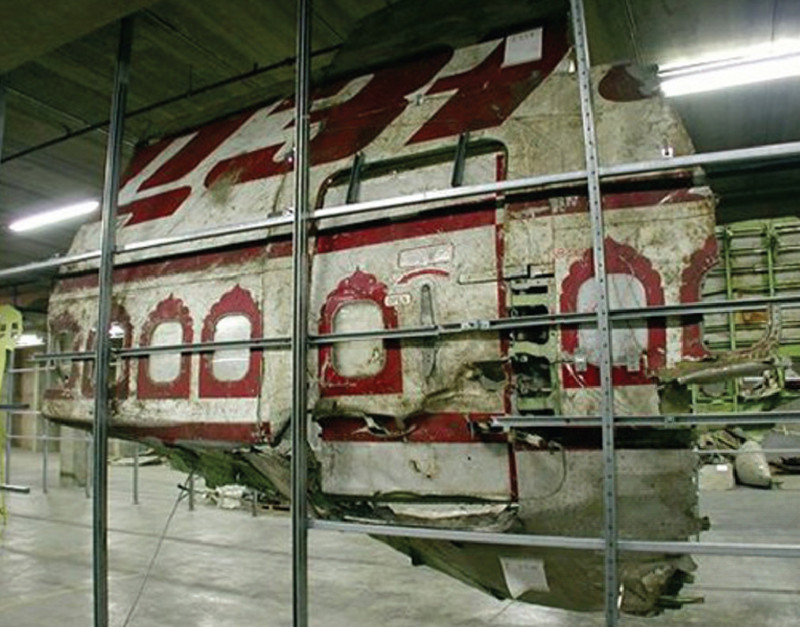Air India Flight 182, operating from Montreal to London, was destroyed by a bomb on June 23, 1985, over the Atlantic Ocean, killing all 329 passengers and crew. The bombing, attributed to Canadian Sikh terrorists, remains the worst terrorist attack in Canadian history and Air India's deadliest incident. The plane crashed 190 kilometers off the Irish coast. Key figures implicated include Inderjit Singh Reyat, who pleaded guilty, and Talwinder Singh Parmar, a leader of the Babbar Khalsa, a Sikh separatist group. The attack remains a stark reminder of aviation terrorism's devastating consequences.
April 1978: Sant Nirankari Mission convention violence
In April 1978, during the Vaisakhi festival, a convention organized by the Sant Nirankari Mission in Amritsar led to violence when a procession of Sikhs led by Bhindranwale confronted the group, resulting in multiple fatalities.
June 1978: First Flight of Emperor Kanishka
In June 1978, the Boeing 747-237B registered VT-EFO and named Emperor Kanishka, the aircraft operating the flight, first flew.
April 1980: Assassination of Gurbachan Singh
In April 1980, Gurbachan Singh, the head of the Nirankaris, was killed, and Ranjit Singh later admitted to the assassination and was sentenced to thirteen years in prison.
November 1981: Parmar escapes shootout
In November 1981, Talwinder Singh Parmar escaped from a shootout in which two Punjab Police officers were killed, adding to the notoriety of Babbar Khalsa.
1983: Occupation of Akal Takht
In 1983, rebels led by Jarnail Singh Bhindranwale occupied Akal Takht of Golden Temple and amassed weapons in the Sikh temple.
July 1984: Parmar urges violence
On July 15, 1984, Parmar urged the Coach Temple congregation of Calgary, Alberta, to "unite, fight and kill" to avenge the attack on the Golden Temple.
August 1984: Gerry Boudreault reports bomb plot
In August 1984, Gerry Boudreault reported that Talwinder Parmar offered him money to plant a bomb on a plane, but he refused and went to the police.
October 1984: Assassination of Indira Gandhi
On October 31, 1984, Indira Gandhi was assassinated by two of her Sikh bodyguards, leading to the anti-Sikh riots in which thousands of Sikhs were killed.
1984: Motives for Bombing
In 1984, militant Sikhs were angered by the destruction of the Golden Temple and deaths of Sikhs during India's ground assault on separatists, as well as the 1984 anti-Sikh riots, which served as motives for the bombing.
February 1985: Attack on Ujjal Dosanjh
In February 1985, Ujjal Dosanjh was injured by an assailant wielding an iron bar due to his stance against Sikh extremist violence.
March 1985: CSIS surveillance of Parmar
In March 1985, the CSIS obtained a court order to place Parmar under surveillance for one year due to his involvement with the Babbar Khalsa.
April 1985: Reyat inquires about explosives
In April 1985, Reyat inquired about the amount of dynamite needed to blow up a tree stump and sought to purchase explosives, expressing a need for revenge and "explosives to help my countrymen."
May 1985: Reyat buys clock and relay
In May 1985, Reyat bought a Micronta digital automobile clock and an electrical relay from RadioShack in Duncan, and wiretaps recorded calls between Reyat and Parmar's residence.
May 1985: Reyat tests and acquires dynamite
In May 1985, Reyat tested a device with a 12-volt battery, gunpowder, and dynamite, and later acquired dynamite and blasting caps from a well driller, also bringing a timer attached to a boombox to his shop for repair.
June 1985: Warnings about flying Air India
In June 1985, Parmar and Bagri warned people at the Malton Sikh Temple that it would be unsafe to fly Air India, and a leader of the International Sikh Youth Federation mentioned plans for an action in two weeks.
June 1985: Paul Besso records Sikh militants
In June 1985, RCMP informant Paul Besso claimed he recorded Sikh militants discussing plans to bomb an Air India flight, providing the recording to the RCMP a week before the bombing.
June 1985: Air India Telex Message
In June 1985, an Air India telex message suggested that planes could be targeted by "time delay devices." James Bartleman testified he saw a security intercept warning of a threat against the airline on the weekend of the bombing.
June 1985: Talwinder Parmar and Hardial Singh Johal's coded conversation
In June 1985, the suspects in the bombing used pay phones and talked in code. Translators' notes of wiretapped conversations include an exchange between Talwinder Parmar and Hardial Singh Johal on 20 June 1985, the day the tickets were purchased.
June 1985: Manjit Singh confirms reservation and checks in suitcase
On 22 June 1985, a man calling himself "Manjit Singh" confirmed his reservations on Air India Flight 181/182. He checked in a Samsonite suitcase for transfer. The agent relented and accepted the bag after initial refusal, but told him he would have to check in again with Air India in Toronto.
June 1985: Events of June 23, 1985
The events of June 23, 1985, resulted in the loss of hundreds of innocent lives and changed many more. However, it did not shake the government's foundations, transform policies, or get officially acknowledged as an act of terrorism.
August 1985: Reyat as a suspect
On 17 August 1985, Reyat became a third suspect once the receipt for the tuner was found with his name.
September 1985: Coroner's Inquest in Cork
On 17 September 1985, a coroner's inquest was convened in Cork. John Hogan gave testimony about two of the drowning victims, a pregnant woman and her unborn son.
October 1985: Bagri aware of investigation
In October 1985, Bagri stated he knew he was probably a suspect, but insisted he would have faced charges if there were any evidence he had anything to do with the bombing.
November 1985: Raids on suspects homes
On 6 November 1985, the RCMP raided the homes of Parmar, Reyat, Gill and Johal. During questioning, Reyat initially denied knowledge of the test blast or Parmar, later changing his story. A search of Reyat's house produced items including green tape and Liquid Fire-brand starting fluid, along with blasting caps and dynamite.
1985: Retrieval of Evidence from Aircraft Wreckage
In 1985, additional evidence supporting the bombing was retrieved from the broken-up aircraft on the sea bed. The British vessel Gardline Locater and the French vessel Léon Thévenin were dispatched to locate the flight data recorder (FDR) and cockpit voice recorder (CVR). By 4 July, Gardline Locator detected signals, and on 9 July, Scarab 1 pinpointed and raised the CVR. The next day, the FDR was also located and recovered. The Canadian Coast Guard Ship (CCGS) John Cabot participated in the investigations, mapping the underwater wreckage of the aircraft.
January 1986: Conclusion of Bomb Explosion
In January 1986, Canadian investigators at the Canadian Aviation Safety Board concluded that a bomb explosion in the forward cargo hold had downed the airliner.
April 1986: Reyat's guilty plea and light sentence
On 29 April 1986, Inderjit Singh Reyat pleaded guilty to possession of an explosive substance and possession of an unregistered firearm, receiving a light $2,000 fine.
July 1986: CSIS agents questioned
On July 16, 1986, J.S. Warren questioned CSIS agents Larry Lowe and Lynn Macadams why they failed to stop and question Parmar and "Mr. X" after they observed them taking an object into the woods near Reyat's home and hearing an explosion.
February 1988: Reyat's Arrest in Britain
On 5 February 1988, Reyat was arrested in Britain as he was driving to the Jaguar car plant, following a request to Britain to extradite Reyat.
December 1989: Reyat Extradited to Vancouver
On 13 December 1989, Reyat was flown to Vancouver after lengthy proceedings to extradite him from Britain.
September 1990: Reyat's Trial Begins
On 18 September 1990, Reyat's trial began.
May 1991: Reyat Convicted of Manslaughter
On 10 May 1991, Reyat was convicted of two counts of manslaughter and four explosives charges relating to the Narita Airport bombing and sentenced to 10 years' imprisonment.
1995: Hayer Provides Affidavit
In 1995, Tara Singh Hayer provided an affidavit to the RCMP. Hayer claimed he overheard Bagri admitting involvement in the bombing, stating that the plane would have blown up at Heathrow if it had been on time.
November 1998: Tara Singh Hayer Murdered
In November 1998, specifically on November 18, Tara Singh Hayer was shot dead in his garage in Surrey, British Columbia. He had survived a previous attempt in 1988 but was paralyzed. His murder rendered his affidavit inadmissible, which later contributed to the acquittal of suspects in 2005.
January 2000: Agent Granted Anonymity
In January 2000, an agent was granted anonymity by Globe and Mail journalists to speak about the destruction of wiretap tapes. The agent stated he felt morally obliged to destroy the tapes to protect the safety of his sources, fearing they would be killed if their identity became known in the Sikh community.
October 2000: RCMP Interview with Bagri
During an interview with Bagri on October 28, 2000, RCMP agents described Surjan Singh Gill as an agent for CSIS, stating that he resigned from the Babbar Khalsa on the advice of his CSIS handlers.
October 2000: Arrest of Malik and Bagri
On 27 October 2000, RCMP arrested Malik and Bagri and charged them with 329 counts of first-degree murder, conspiracy to commit murder, attempted murder, and two counts of murder. This became known as the "Air India Trial".
June 2001: Arrest of Reyat on Murder Charges
On 6 June 2001, RCMP arrested Reyat on charges of murder, attempted murder, and conspiracy in the Air India bombing.
2001: September 11 attacks
In 2001, the September 11 attacks surpassed the bombing of Air India Flight 182 as the world's deadliest act of aviation terrorism.
February 2003: Reyat Pleads Guilty to Manslaughter
On 10 February 2003, Reyat pleaded guilty to one count of manslaughter for aiding in the construction of a bomb and was sentenced to five years in prison. He was expected to provide testimony in the trial of Malik and Bagri.
April 2003: Malik and Bagri Trial Begins
In April 2003, the trial of Malik and Bagri began in Courtroom 20, the "Air India courtroom".
June 2003: Government Insists No Mole Involved
As of June 2003, the Canadian government continued to assert that there was no mole involved in the bombing of Flight 182, despite earlier failures of CSIS.
2003: Conviction of Inderjit Singh Reyat
In 2003, Inderjit Singh Reyat was convicted and sentenced to fifteen years in prison for manslaughter related to assembling the bombs used on Air India Flight 182 and at Narita.
2003: Inderjit Singh Reyat's guilty plea
In 2003, Inderjit Singh Reyat, a dual British-Canadian national, pleaded guilty to manslaughter in connection with the Air India Flight 182 bombing.
2003: Reyat admits lying
In 2003, Reyat was accused of lying when he initially denied knowing the purpose of the clocks he purchased, later stating that Parmar needed timers for an explosive device.
December 2004: Malik and Bagri Trial Concludes
In December 2004, the trial of Malik and Bagri concluded.
March 2005: Malik and Bagri Acquitted
On 16 March 2005, Justice Ian Josephson found Malik and Bagri not guilty on all counts due to inadequate evidence.
June 2005: Memorial Service Attended by Prime Minister
In June 2005, specifically on June 23, Prime Minister Paul Martin attended a memorial service in Ahakista, West Cork, Ireland, with families of the victims of Air India Flight 182. This was the first visit by a Canadian Prime Minister to the Irish memorial, which was built after the bombing. The anniversary was declared a national day of mourning.
2005: Disappearance of Air India Flight 182 from Radar
At 07:09:58 GMT on an unspecified date in 2005, the crew of the Boeing 747 "squawked 2005" and disappeared from radar screens five minutes later. At 07:14:01 GMT, a bomb hidden in a Sanyo tuner exploded, causing the aircraft to break up mid-air. No "mayday" call was received, and an emergency was declared by 07:30:00 GMT.
February 2006: Reyat Charged with Perjury
In February 2006, Inderjit Singh Reyat was charged with perjury with regard to his testimony in the trial, with the indictment listing 27 instances in which he allegedly misled the court.
May 2006: Public Inquiry Announced
In May 2006, the Canadian government, advised by Prime Minister Stephen Harper, announced a full public inquiry into the Air India Flight 182 bombing. The inquiry, headed by retired Supreme Court Justice John Major, aimed to investigate the events and identify gaps in Canada's security and intelligence system.
May 2007: Public Opinion on Air India Bombing
In May 2007, Angus Reid Strategies released public opinion poll results regarding the Air India bombing. 48% of Canadians viewed it as a Canadian event, while 22% saw it as mostly Indian. 34% blamed CSIS and airport security, 27% blamed the RCMP, and 18% mentioned Transport Canada.
July 2007: Reyat Denied Parole
On 3 July 2007, Reyat was denied parole by the National Parole Board, which concluded he was a continued risk to the public.
February 2008: End of Reyat's Sentence
On 9 February 2008, Reyat's full five-year sentence ended.
March 2010: Dismissal of Reyat's Perjury Trial
In March 2010, Reyat's perjury trial in Vancouver was abruptly dismissed on 8 March 2010 after "biased" remarks were made about Reyat by a woman juror.
June 2010: Inquiry Findings Published
In June 2010, specifically on June 17, the final report of the public inquiry, "Air India Flight 182: A Canadian Tragedy," was published. The report, consisting of 4,000 pages, 5 volumes, and 64 recommendations, concluded that a cascading series of errors by Crown ministries, the RCMP, and CSIS led to the attack.
June 2010: Release of the Commission of Inquiry report
In June 2010, the report of the Commission of Inquiry was completed and released, concluding that a "cascading series of errors" by the Government of Canada, the RCMP, and the CSIS had allowed the attack to take place.
September 2010: Reyat Convicted of Perjury
In September 2010, Reyat was convicted of perjury on 19 September 2010 after jurors were told he had lied 19 times under oath.
2010: Reyat's limited admission
As late as 2010, Reyat admitted only to buying and assembling some parts, but denied he ever made a bomb, knew what the bomb was to be used for, who was behind any plot, or that he ever asked or knew the name of the man who he said stayed in his house for a week completing construction of the explosive device after his device failed.
January 2011: Reyat Sentenced to Prison
In January 2011, Inderjit Singh Reyat was sentenced to 9 years in prison. Justice Mark McEwan stated that Reyat did not show remorse and seemed committed to a cause that treated people as expendable.
February 2011: Reyat Files Appeal
In February 2011, Inderjit Singh Reyat filed an appeal against his sentence. Reyat claimed the judge erred in law, misdirected the jury, and failed to provide evidence, considering the sentence "harsh and excessive".
January 2013: Supreme Court Rejects Reyat's Appeal
In January 2013, the Supreme Court of Canada rejected Inderjit Singh Reyat's appeal against his perjury conviction without disclosing specific reasons.
March 2014: Reyat's Appeal Dismissed
In March 2014, the British Columbia Court of Appeal dismissed Inderjit Singh Reyat's appeal, arguing that the 9-year sentence for perjury was unfit. The court stated that the gravity of the perjury in this case was unparalleled.
2014: Memorial Opened in Ottawa
In 2014, a third Canadian memorial was opened in Ottawa to commemorate the victims of Air India Flight 182. A fourth memorial was unveiled in Lachine, Montreal on the 26th anniversary of the tragedy.
January 2016: Reyat Released on Parole
On January 28, 2016, Inderjit Singh Reyat was released on parole after serving time for his involvement in the Air India Flight 182 bombing case.
February 2017: Reyat Released from Halfway House
In February 2017, specifically on February 14, Inderjit Singh Reyat was released from a halfway house with certain restrictions, less than 13 months after being granted parole.
July 2022: Murder of Ripudaman Singh Malik
On 14 July 2022, Ripudaman Singh Malik, one of the men acquitted in the 1985 Air India militant bombings, was shot to death in Surrey, B.C.
July 2022: Ripudaman Singh Malik Shot Dead
On July 14, 2022, Ripudaman Singh Malik was shot multiple times and died outside his family business, Papillon Eastern Imports, in Surrey, British Columbia.
2023: Public Knowledge of Attack
In 2023, 38 years after the Air India Flight 182 attack, an Angus Reid Institute study found that nine out of ten Canadians had little to no knowledge of the attack. Only one in five correctly classified it as one of the worst acts of mass murder in Canadian history.
2023: Value of money offered in 1984
In 2023, it was reported that the $200,000 offered to plant the bomb in 1984, would be equivalent to approximately $496,427.
2024: Disruption of Memorials
In 2024, Khalistani supporters and activists disrupted memorials to the Air India Flight 182 victims. They carried signs promoting conspiracy theories and clashed with mourners.
Mentioned in this timeline

Gunpowder also known as black powder is the oldest known...

Radar is a radiodetermination system using radio waves to detect...
India officially the Republic of India is a South Asian...

The Boeing Company is a multinational corporation and one of...

A car also known as an automobile is a wheeled...
Pakistan officially the Islamic Republic of Pakistan is a South...
Trending

2 months ago Gwyneth Paltrow on Timothée Chalamet and Kylie Jenner's Relationship: 'Punk Rock'

Lisa Rinna is an American actress television personality and model known for her roles on soap operas like Days of...
8 months ago Barcelona and Real Madrid to Clash in Copa del Rey Final El Clasico.

5 months ago Student Loan Repayment Troubles: 460K Denied, Backlog Alarms, Forgiveness Halted.

Amy Winehouse - was a highly acclaimed English singer and songwriter celebrated for her distinctive contralto voice and genre-bending music...

8 months ago Dyson Daniels Wins 2024-25 NBA Most Improved Player; Zubac, Cunningham Runners-Up
Popular

Candace Owens is an American conservative political commentator and author...

Ilhan Omar is an American politician currently serving as the...

XXXTentacion born Jahseh Dwayne Ricardo Onfroy was a controversial yet...

Frederick Christ Trump Sr - was an American real estate...

Charles James Charlie Kirk was a prominent American right-wing political...

Cristiano Ronaldo often nicknamed CR is a Portuguese professional footballer...
